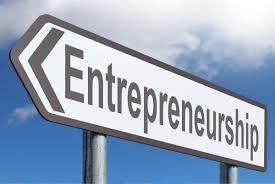1. Write down the definition of SME. (1)
SME stands for Small and Medium Enterprise.
Small Enterprise denotes to the firm/business which is not a public limited company and adds the following criteria:
Table: Small Enterprise Criteria
Serial No.
|
Sector
|
Fixed Asset other
than Land and Building (Tk.)
|
Employed
Manpower (not above)
|
01.
|
Service
|
50,000-50,00,000
|
25
|
02.
|
Business
|
50,000-50,00,000
|
25
|
03.
|
Industrial
|
50,000-1,50,00,000
|
50
|
Medium Enterprise indicates to the establishment/firm which is not a public limited company and adds the following criteria:
Table: Medium Enterprise Criteria
Serial No.
|
Sector
|
Fixed Asset
other than Land and Building (Tk.)
|
Employed
Manpower (not above)
|
01.
|
Service
|
50,00,000-10,00,00,000
|
50
|
02,
|
Business
|
50,00,000-10,00,00,000
|
50
|
03.
|
Industrial
|
1,50,00,000-20,00,00,000
|
150
|
Source: Bangladesh Bank
2. In which sector Hand-made food/Bakery/Hand-loom belongs to? Analysis of your answer based on SME definition. (1.5)
3. There are __________basic characteristics of Entrepreneurship. (Three)
4. Match the table.
Category A
|
Category B
|
1. Innovation
|
I. New-market demand creation based on the utility of the existing product.
|
2. Risk-Taking
|
|
3. Organizing
|
5. Write down the characteristics of an entrepreneur.
6. Write down differences between an entrepreneur and a manager.
Item:
a.Motive
b.Status
c.Risk-bearing
d.Reward
e.Innovation
f.Qualification
Table: Differences
between an entrepreneur and a manager
Item
|
Entrepreneur
|
Manager
|
Motive
|
||
Status
|
||
Risk-bearing
|
||
Reward
|
||
Innovation
|
||
Qualification
|
7. Write down the functions of an entrepreneur.
a. Idea generation and screening of best idea
b. Determination of business objective
c. Product analysis and market research
d. Determination of form and ownership of a business.
e. Raising necessary funds
f. Procuring machines nad materials
g. Recruitment of manpower
h. Undertaking business operation
8. Short note.
a. Form of ownership
b. Type of ownership
9. Write down types of entrepreneurs.
Types of entrepreneurs
a. Innovating: A new product or market or use developer. It is practiced in a developed country.
b. Imitative: A new product or market or use copying entrepreneur. It is practiced in a developing country.
c. Fabian: A new product or market or use launcher after certain justifying it and taking a certain time.
d. Drone: No change is made of a new product or market or new use in this kind of entrepreneurship. Traditional perception is the basis of this type of entrepreneurship. For instance, Rosmalay of Cumilla.
10. Mention the general category of entrepreneurship.
Sole operator, active partner, inventor, challenger, buyer, life-timer.
11. Match the table.
Category A
|
Category B
|
a. Sole operator
|
i. sole proprietorship
|
b. Active partner
|
ii. not only investing money but also the same participation
|
c. Inventor
|
iii. involvement of research and development
|
d. Challenger
|
iv. SWOT analyzer
|
e. Buyer
|
v. buy an established business and run it
|
f. Life-timer
|
vi. involvement of the traditional way and run the family business
|








0 Comments